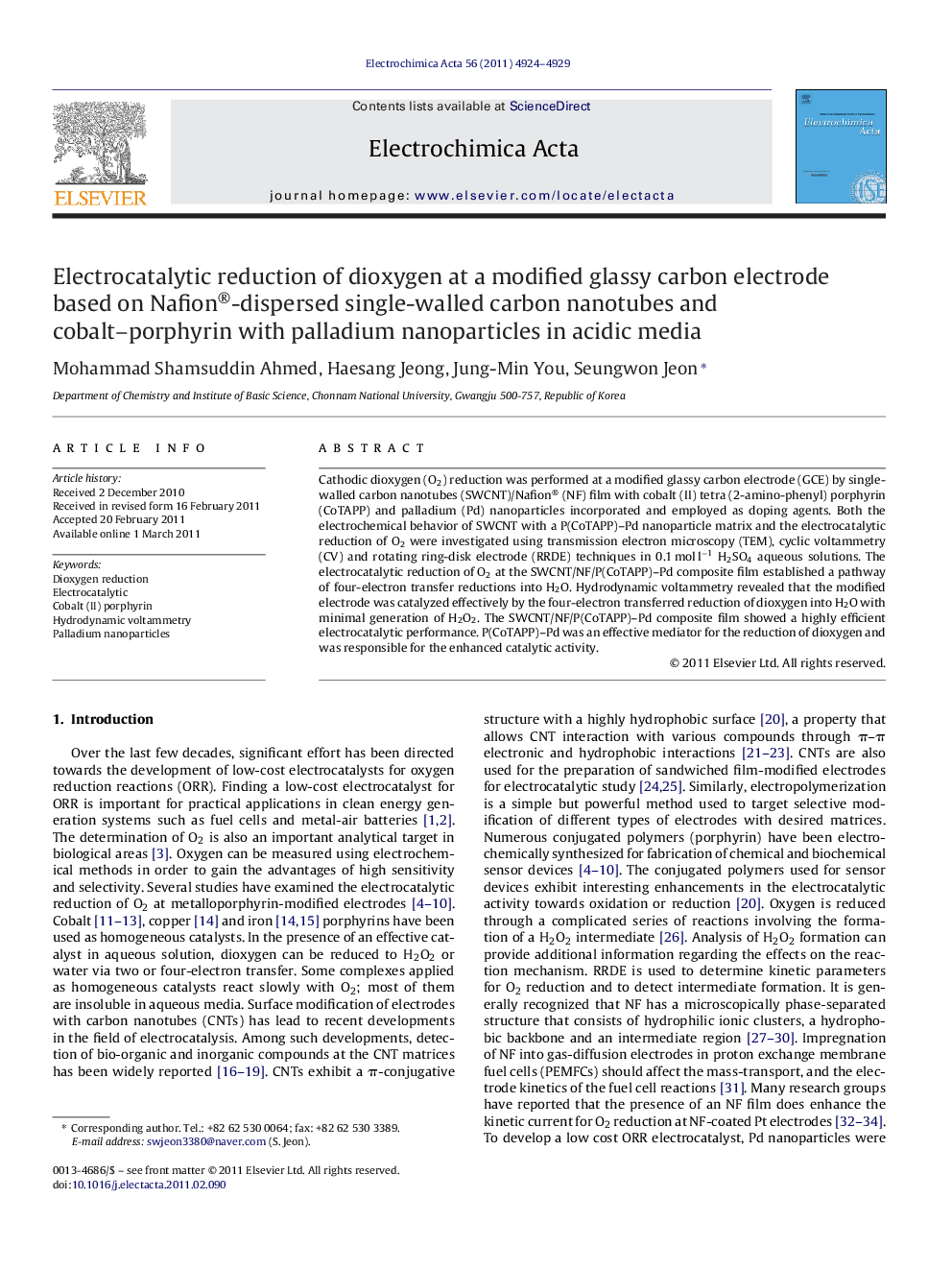| Article ID | Journal | Published Year | Pages | File Type |
|---|---|---|---|---|
| 189974 | Electrochimica Acta | 2011 | 6 Pages |
Cathodic dioxygen (O2) reduction was performed at a modified glassy carbon electrode (GCE) by single-walled carbon nanotubes (SWCNT)/Nafion® (NF) film with cobalt (II) tetra (2-amino-phenyl) porphyrin (CoTAPP) and palladium (Pd) nanoparticles incorporated and employed as doping agents. Both the electrochemical behavior of SWCNT with a P(CoTAPP)–Pd nanoparticle matrix and the electrocatalytic reduction of O2 were investigated using transmission electron microscopy (TEM), cyclic voltammetry (CV) and rotating ring-disk electrode (RRDE) techniques in 0.1 mol l−1 H2SO4 aqueous solutions. The electrocatalytic reduction of O2 at the SWCNT/NF/P(CoTAPP)–Pd composite film established a pathway of four-electron transfer reductions into H2O. Hydrodynamic voltammetry revealed that the modified electrode was catalyzed effectively by the four-electron transferred reduction of dioxygen into H2O with minimal generation of H2O2. The SWCNT/NF/P(CoTAPP)–Pd composite film showed a highly efficient electrocatalytic performance. P(CoTAPP)–Pd was an effective mediator for the reduction of dioxygen and was responsible for the enhanced catalytic activity.
► Our modified electrode is denoted as SWCNT/NF/P(CoTAPP)–Pd/GCE. ► It was used for electrocatalytic ORR in acid media. ► Electrode was catalyzed effectively by four electron transferred reduction. ► Koutecky–Levich plot and Tafel plots were also verified this agreement. ► H2O was the main product in the catalytic reaction.
